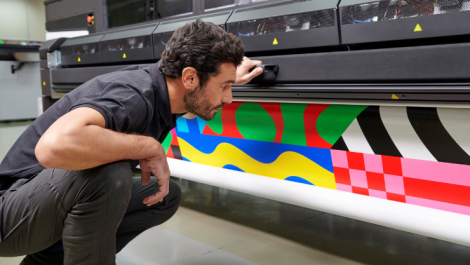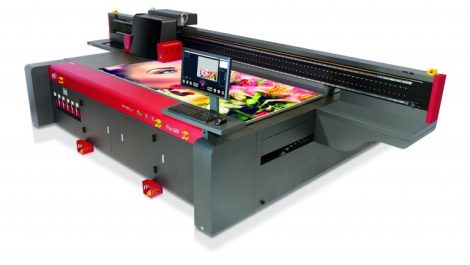Wide-format software developer Caldera has upgraded its RIP platform to version 9.10. Updates include integration of the Adobe PDF Print Engine (APPE) 2.6, Raster2PDF, multi-page collation and Japanese language support, along with new options and extensions such as the HPGL engine, textile step and repeat and enhancements to the VisualCUT+ and EasyMedia modules. Production can now be monitored from the shop floor through the new Print Board plug-in for Caldera’s digital signage solution Variable Display.
Caldera said that v9.10 also has improved reliability, stability and compliancy, with performance-enhancing tweaks to help drive productivity and efficiency, as well as helping users meet increasing demand for output to conform to recognised standards. The CopyRIP, VisualRIP, VisualRIP+ and GrandRIP+ versions of the Rip platform will all adopt the upgrades along with a number of Caldera’s add-on modules, including cutting and colour management solutions.
‘This update includes some very significant improvements to our RIP solutions,’ says Frederic Soulier, chief technical officer. ‘We have put standards compliance at the heart of this release to help print businesses of all sizes take advantage of increased process control easily, improving their output quality and profitability as a result. The productivity gains possible with APPE 2.6, and the new tools and features we have added, make this our most comprehensive and efficient solution to date.’
An important development for standards-driven print businesses is the new Process Control Compliancy feature for FOGRA Process Standard Digital (PSD) and Process Standard Offset (PSO). For use with Caldera’s colour profiling solution EasyMedia, the Process Control option allows the printing and measuring of standardised colour reproduction charts from within the Print or EasyMedia interfaces. The module also delivers compliancy reports for ISO 12647-2, ISO 12647-7, ISO 12647-8, PSD Absolute and PSD Relative to ensure conformity to FOGRA standards in their printing processes.
A further EasyMedia update allows users to create profiles that take optical brighteners into account. The Optical Brightness Compensation (OBC) works seamlessly with suitable spectrophotometers, such as the X-Rite i1 Pro2 or Caldera ColorPad, to incorporate classic chart measurement, OBC measurement, greyscale chart print and measurement and visual correction with the chosen illuminant. Caldera’s TotalColor or Swing devices can also be used with the addition of a physical filter.
All Caldera RIPs will now have the Adobe PDF Print Engine 2.6 for more consistent and productive printing. According to the company this helps to streamline production of complex documents and offers improved compatibility with Acrobat, as well as better font support. Caldera v9.10 also supports a Raster2PDF function, which improves processing of raster files by utilising APPE 2.6 and removes the size limitations for some raster file formats, especially TIFF.
Other optional new features available in Caldera 9.10 include the HPGL engine designed for the latest single-pass and technical printers for CAD, technical and industrial drawing applications.
The VisualCUT+ module also sees a number of enhancements, such as an improved graphic user interface (GUI), a new preview mode with tools such as zoom and contour selection, the ability to save custom cutting parameters and new cut drivers. In addition, the optional Caldera Textile Step and Repeat tool offers an integrated solution for the printing of seamlessly repeating textiles or other graphic patterns, and now includes a ‘Detect drop’ function to apply the correct shift for pattern repetition automatically.
Caldera v9.10 also offers PSPs the opportunity to monitor production from the print show floor using Variable Display, Caldera’s digital signage solution. With the optional Print Board plug-in, data is extracted from the Caldera RIP and displayed on a screen so that key production information – such as which jobs are in progress, or the number of square metres processed each day – is available to all employees.
Also new for v9.10 is the ability to collate multiple-page prints, with users able to choose either assembled printing to repeat the sequence of pages from first to last, or to print all copies of one page followed by all the copies of the next page and so on.
‘Caldera v9 was very well received across the industry and we are building on its success with this update,’ explains Joseph Mergui, CEO, Caldera. ‘Version 9.10 represents a great step forward for wide-format print producers, particularly when it comes to standards compliance. Our mission is always to make printing better and easier for our users and we believe we have achieved this aim in the new release.’
Contact: www.caldera.com




